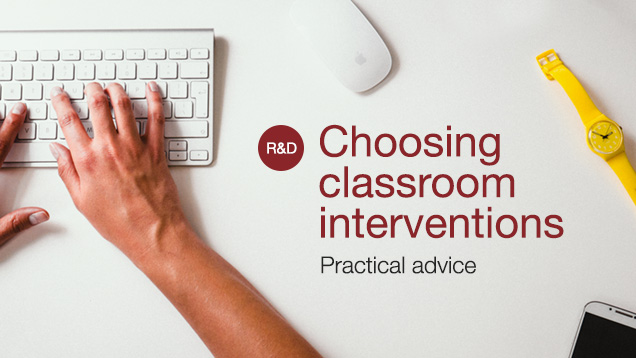
Practical advice on school-led research – in the first of a series of blogs on research in schools, Robin Hall looks at approaches to testing interventions in the classroom.
Practical guides to school-led R&D
1. Classroom interventions
Which intervention should I use?
Start with the issue at hand. What is the problem you are trying to solve?
If you take reading as an example, pupils learning to read need to first decode the words in the text and then interpret their meaning. Some interventions will help pupils with decoding, while others will help with the meaning.
Be clear about what your particular attainment gap is and specifically what might be causing it.
You could try using root cause analysis to work this out. The ‘five whys’ method and fishbone diagrams are very helpful tools used in other disciplines.
Why not pick the intervention with the biggest effect size?
Looking at effect sizes from large trials is a good starting point. However, trials involving a large number of schools can obscure the effects on particular sub-groups of pupils or pupils in different contexts.
Toolkits, such as the EEF teaching and learning toolkit, can give you an idea of what is likely to work on average.
You will need to do some more digging to check that the intervention will address your specific issue and has been tested in your particular context.
After you’ve done some research, propose a solution and then test that the solution works for your pupils.
Further reading
In 2015 around 50 teachers took part in NCTL’s Closing the gap: test and learn event to share the results from their own research projects and you can read about the results their schools achieved in the Closing the gap: test and learn case study reports.
You can also read Robin’s blog on the Closing the gap event.
If you have any questions or feedback, please comment below. To keep up to date with this blog, you can sign up for email updates or follow NCTL on Twitter.
For more information or opportunities to get involved with our work, visit our pages on GOV.UK.
Leave a comment